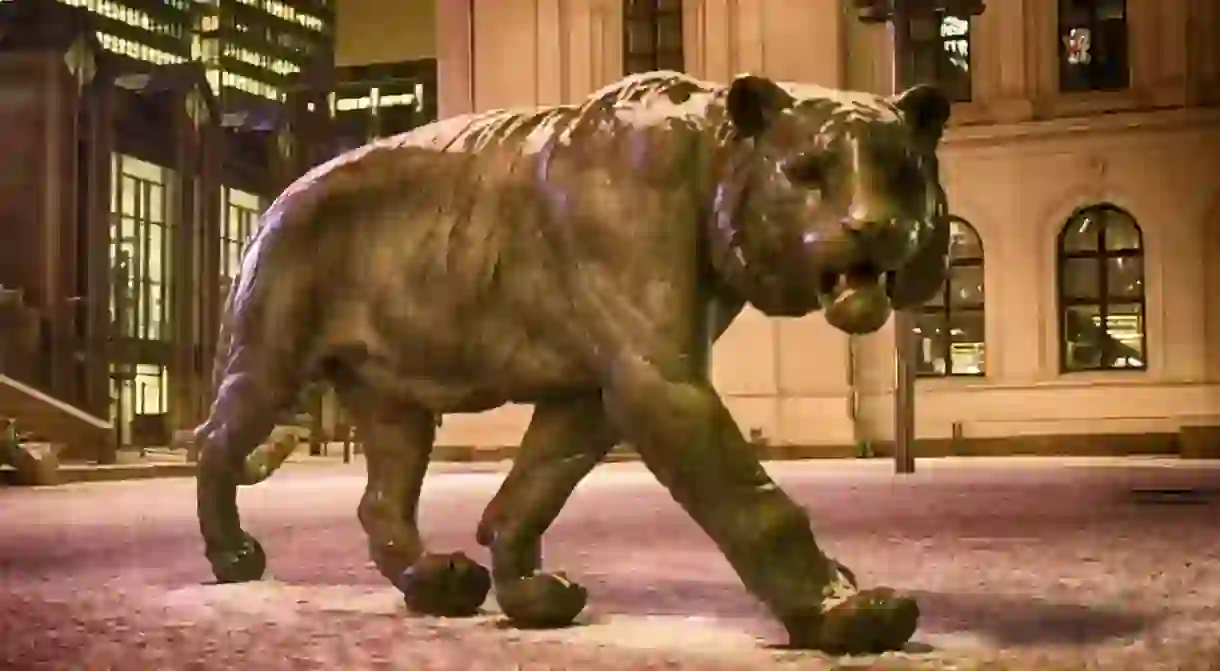How to Spend 24 Hours in Oslo

For a capital city, Oslo is fairly compact, which means that you can actually see a lot of it in 24 hours. Naturally, the Norwegian weather and season has a big say in what you should do, so we’ve included a few different options for a well-spent day in Oslo.
In the Morning
Oslo is ideal for walking, but its excellent transport system is a great back-up for rainy weather, or for those who find walking or reaching those further-out destinations more difficult. A great first point to visit is the local transport “Ruter” office just outside of the Central Station on Jernbanetorget, where you can pick up a 24-hour ticket. These are also available from machines at the other stations in Oslo. Oslo’s visitor centre is just by the station too. From here, you can head to the famous Tiger Statue on the square. Free walking tours start from here every day at 10am and take about two hours. Alternatively, head northwards to Grünerløkka – roughly a twenty-minute walk or eight minutes by public transport – to sample some of Oslo’s hippest brunch spots and cafés.

At Midday
Walk down Karl Johans gate, the main shopping street in Oslo, towards the Royal Castle at the top of the western end of the street. You’ll reach the square at the heart of Oslo, where you have Norway’s parliament and the National Theatre on the left and the University of Oslo’s impressive white buildings on the right, which house the Law Department and Administration. (This is also where the guided tour ends.)
If the weather is good, take a stroll up to the Castle Park, where you may even see a member of the very down-to-earth royal family out on a stroll around here. As an alternative, the National Gallery located just behind the university buildings gives an excellent overview of Norwegian art through the ages, and houses The Scream and an entire room dedicated to Munch’s paintings.

In the Afternoon
In good weather, you can continue on eastwards from the Castle Park up Bogstadveien, one of Oslo’s most popular and upmarket shopping streets, to the Majorstuen district. Take in the classic, colourful Oslo apartment blocks on your way. The 11 and 19 trams will get you there too. Once you reach Majorstuen, walk down Kirkeveien to the Vigeland Park, one of Oslo’s most famous attractions and the largest sculpture park in the world. The two museums in the park, the Vigeland Museum and Oslo City Museum, are great options if the weather doesn’t quite lend itself to close inspection of the weird and wonderful statues.
From Majorstuen, it is easy to take the metro up to Holmenkollen, Norway’s awe-inspiring ski jump, where you’ll also find one of the most beautiful views of Oslo and its surroundings. The Bygdøy peninsula to the south houses many of Oslo’s best museums, including the Folk Museum and the Viking Ship Museum.

For the Evening
The beautifully rehabilitated old dockyard Aker Brygge is now home to some of Oslo’s best upmarket restaurants and bars. This is a great place to sample some of Norway’s delicacies such as fish and other seafood, and its waterfront location and view of the fjord lend themselves magnificently to a warm and light summer night (the sun only really sets close to midnight in June and July). In fact, in such weather, the whole waterfront from Aker Brygge to Akershus fortress down Rådhusgata to the impressive new buildings at Bjørvika is worth taking in. The Opera House at Bjørvika is one of Oslo’s architectural masterpieces. Perhaps an opera or ballet will tempt you, but if not, a visit to its exterior and interior is definitely recommended.

Livelier nightlife, meanwhile, can be found in Grünerløkka to the north, in the city centre or to the east in the Gamle Oslo area, where restaurant prices also tend to be a little lower. All that’s left to do is to wish you good night and to urge you to open the windows when you sleep – Oslo’s famously crisp, fresh air is one of the special delights of this Nordic capital.
Featured image by Tydence Davis.













